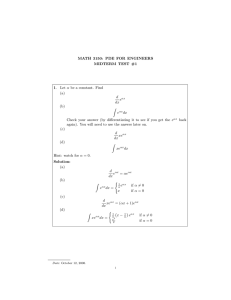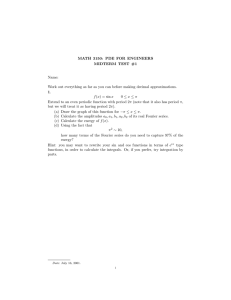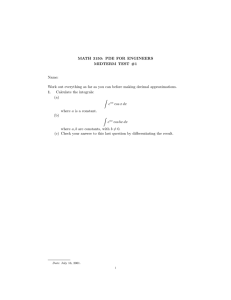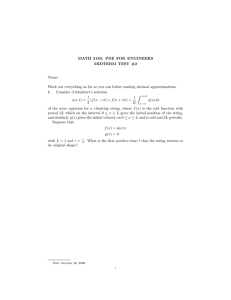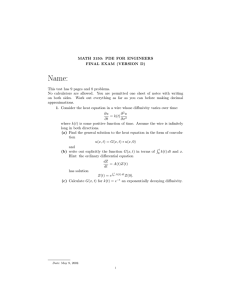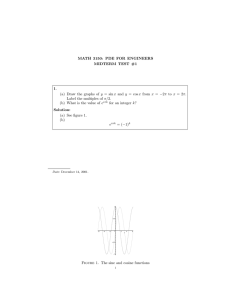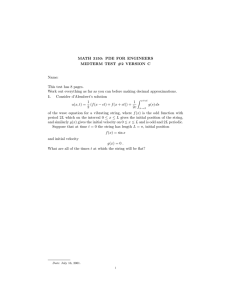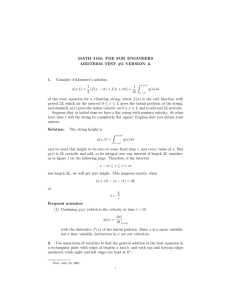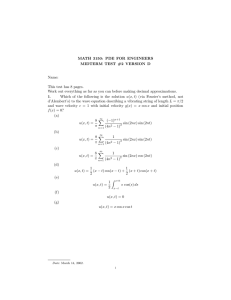MATH 3150: PDE FOR ENGINEERS MIDTERM TEST #1 Name:
advertisement
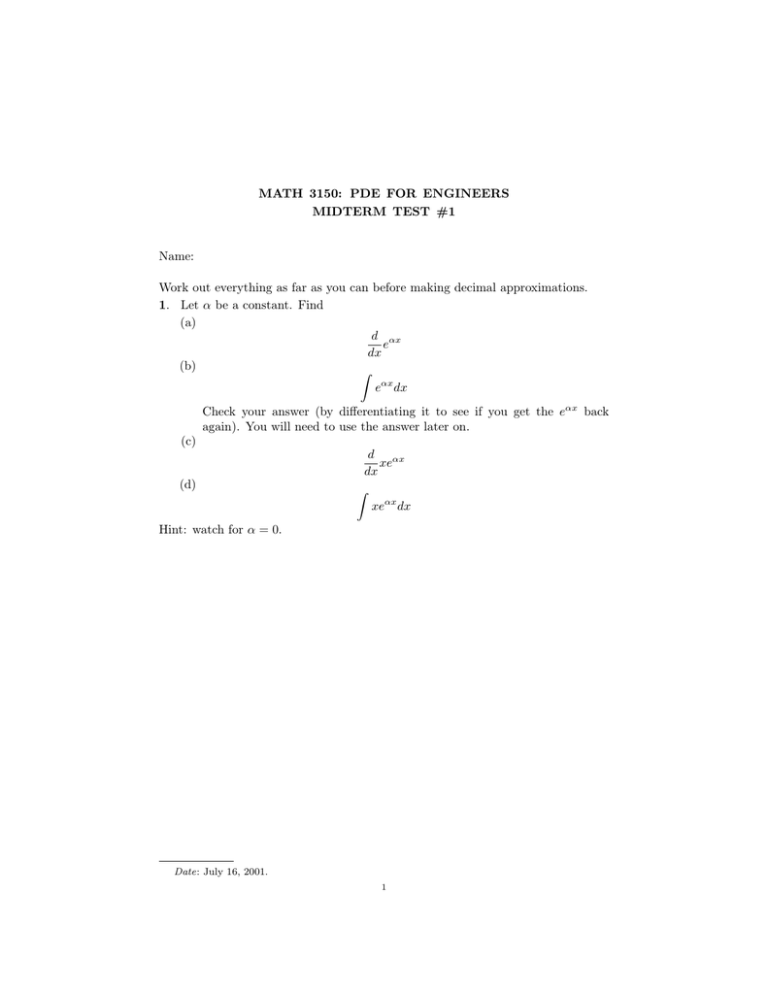
MATH 3150: PDE FOR ENGINEERS MIDTERM TEST #1 Name: Work out everything as far as you can before making decimal approximations. 1. Let α be a constant. Find (a) d αx e dx (b) Z eαx dx Check your answer (by differentiating it to see if you get the eαx back again). You will need to use the answer later on. (c) d αx xe dx (d) Z xeαx dx Hint: watch for α = 0. Date: July 16, 2001. 1 2 2. MATH 3150: PDE FOR ENGINEERS MIDTERM TEST #1 √ f (x) = α 2eα(x−π) −π ≤x<π where α is a constant, and f (x) has 2π period. (a) Draw the graph of f (x) assuming α = 1. (b) Calculate the complex Fourier series of f (x). (The amplitudes depend on α.) Hint: since α is just a constant, your integrals are products of exponential functions. Use the rule eA eB = eA+B . (c) Calculate the energy of f (x) (it depends on α). What happens as α → ∞? Hint: the function gets very wild. (d) Calculate the energy stored in each amplitude. Approximately how much energy is stored in the amplitudes ck for k a positive or negative number which is small (close to zero) compared with α when α is large? Hint: it better turn out like Heisenberg’s uncertainty principle—a long list of nearly constant amplitudes. MATH 3150: PDE FOR ENGINEERS 3. Calculate Z 2π 3 esin 0 (hint: don’t work out any integrals). x MIDTERM TEST #1 3 − ecos x dx 3 4 MATH 3150: PDE FOR ENGINEERS MIDTERM TEST #1 4. (a) Find the real Fourier series of f (x) = cos2 x − sin2 x (hint: don’t calculate any integrals). (b) The same for f (x) = sin x cos x. MATH 3150: PDE FOR ENGINEERS 5. MIDTERM TEST #1 5 The ordinary differential equation d2 f df +µ +f =0 dt2 dt (where µ is a real constant) has a periodic solution f (x) which is not constant. Plug in a complex Fourier series for f (x) to find the possible values of µ. 6 6. MATH 3150: PDE FOR ENGINEERS MIDTERM TEST #1 Suppose that f (x) has period T . Let g(x) = f (T x/S) where S is a positive constant. (a) g(x) is periodic. With what period? (b) Calculate the energy of g(x), expressed in terms of the energy of f (x). (c) Express the complex amplitudes of g(x) in terms of those of f (x).
